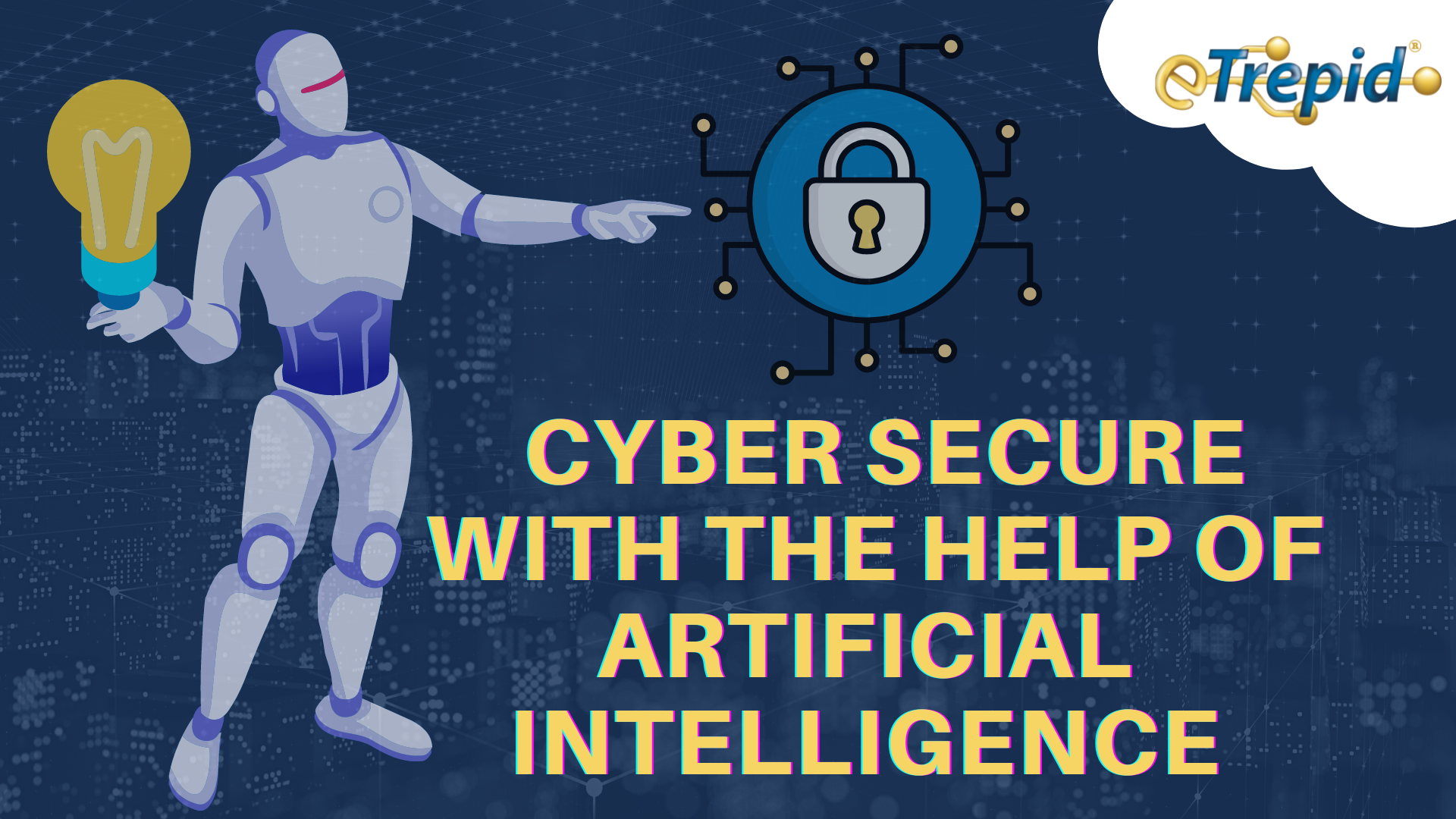Cyber Secure with the Help of Artificial Intelligence
Artificial Intelligence (AI) is one of the most widely misunderstood technologies in use today. While scenes from the Matrix make for good entertainment, the reality of AI is much more mundane and practical than Hollywood blockbusters. On its most fundamental level, artificial intelligence is simply a term that describes machines that can simulate the cognitive functions demonstrated by human intelligence – functions like language processing, planning for the future, and basic reasoning.

Far from being self-aware entities driven by existential pursuits, AI is just another tool, like a hammer or a screwdriver. Not only are these tools much more pragmatic than commonly perceived, but they are also much less futuristic – indeed, they are already here.
Widely used in everyday activities, AI enhancements can be found in search engines like Google, or video recommendations on Netflix and YouTube suggestions, and even voice-controlled assistants like Apple’s Siri or Amazon Alexa. Like any other tool, AI technologies are most effective when applied to the right kind of task.
Under Siege: The Alarming Explosion of Cyber Crime
It’s no secret that the threat of cyber-attacks has exponentially increased since the beginning of the COVID-19 pandemic. According to the FBI’s annual report on Internet Crime, reports of over 791,000 internet crime complaints during 2020 mean an increase of more than 69.4% from the previous year – with reported losses above $4.2 billion.
Following high-profile attacks like the Colonial Pipeline hack, the ransomware assault on the Washington D.C. Police Department, and a severe breach at the U.S. State Department, it has become painfully evident that no organization, business, or institution is inherently safe.
Indeed – some of the most favored targets for cybercriminals are companies that manage critical national infrastructure, like hospitals that save lives. These attacks have prompted the Department of Justice to launch an aggressive cybersecurity program to help resecure the nation’s digital profile.
Read more about the DOJ’s new Cybersecurity Program
Who Is Really at Risk?
By processing or storing client data, your business faces a substantial threat from cybercrime. Contrary to popular belief, small businesses are in fact bearing the brunt of the recent explosion in ransomware attacks. In recent testimony to the U.S. Senate on the rise in cybercrime, Chair of the Senate Judiciary Committee Dick Durbin testified that “Though any person or entity can be targeted in a ransomware attack, it has been estimated that small businesses make up over half of the victims.”
Not only are small businesses accounting for the majority of all ransomware victims, the damage to small businesses from ransomware attacks far exceeds that of their larger counterparts.
Many small businesses are already operating on thin margins. With the average recovery time for these victims coming in at around 9 months, many small businesses are simply unable to overcome the financial devastation.
Every business, whether it employs 10 people or 10,000, must take this threat seriously. It’s real, it’s becoming more frequent, and it’s becoming more destructive.
Using AI to Solve Problems
The task then becomes the challenge of keeping an organization secure amidst the commoditization and increased ease of digital crime. Cyber security experts are applying the incredible capabilities of AI integration to respond to a menace, optimizing proven defensive techniques to counter the escalating pressure effectively.
Some of the most strategically practical applications of AI technologies are in these critical areas:
- Threat Identification – Maintaining digital security requires constant work. Like a white blood cell in the body’s immune system, AI-enhanced security programs actively monitor a company’s digital anatomy to hunt for threats. These programs weaponize the Machine Learning (ML) faculties inherent to AI tech: not only to exhaustively search for the key signatures of known cyber threats, but also to improve its understanding of an organization’s operations over time – becoming more accurate and more sensitive to potentially harmful system process changes as it learns.
- Vulnerability Management – In addition to the ability to quickly identify potential threats to system security, companies need to have the capacity to prioritize these threats effectively. The sheer amount of positive threat identifications that a company might face regularly is staggering – some companies could be facing hundreds of new attacks each day. Prioritizing these threats into manageable risk categories dramatically increases the effectiveness of cybersecurity defenses, ensuring that the most pressing risks are isolated and addressed before they cause issues. The extraordinarily rapid data process scrutiny powers needed to weigh volumes of digital pattern analyses against one another successfully is mind-boggling – and only achievable through the help of AI technology.
- Network Security – Conventional network security models rely on the observation of two key network features: user/device traffic and operational topology. By integrating AI capabilities, organizations can more efficiently deploy their network traffic authentication defenses to determine whether specific sources are legitimate or if they pose a threat, isolating and removing unauthorized accessors before systems are breached. In addition, machine learning functions enable AI-powered network security applications to observe and learn the normal network shape over time, allowing it to recognize network patterns to improve its security abilities continuously.
- User Authentication – Authenticating user and device access has become more challenging during the Covid-19 pandemic, as more and more businesses are implementing hybrid and remote working models. Companies need a security solution that operates on a framework of zero trust. Zero trust architectures do not grant automatic access to assets or user accounts based solely on their physical or network location. By relying on a principle of least privilege, these systems restrict user and device access by default, ensuring that multifaceted authentication procedures never get bypassed. AI augmentation provides the resources businesses need to implement and manage complex zero-trust frameworks successfully.
- Systems Observability – Besides monitoring network activities and system processes, AI-enhanced cyber security applications can monitor an organization’s physical IT infrastructure for key operational metrics. These physical systems are crucial in maintaining digital security from cooling, power, internal temperature, and hardware backups. With AI assistance, companies gain valuable insights into the effectiveness of their IT infrastructure components and deploy critical hardware maintenance preemptively before device failures can weaken digital defense.
The Takeaway
AI is a complex tool that generates real benefit in the war against cybercrime and is quickly becoming an absolute necessity as criminal actors begin to deploy their own AI enhancements in their attacks on businesses. The imperative for companies to respond appropriately to protect their interests, and the interests of their clients, has never been greater. When working in tandem with a team of proven cybersecurity experts and AI applications, businesses can minimize their exposure to cyber threats, outmaneuver would-be hackers, and protect the future of their operations.
Learn more about how AI can help protect your business and what you can do to minimize the chance of a successful cyber attack.


.png)
Leave A Comment